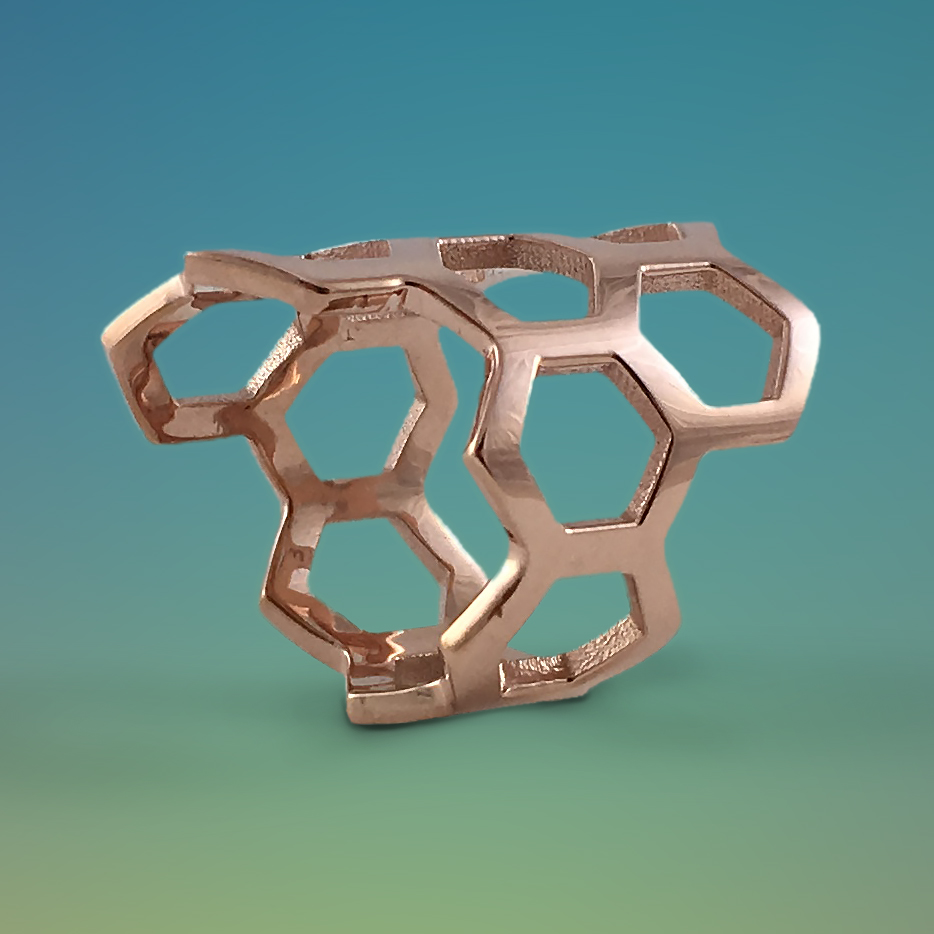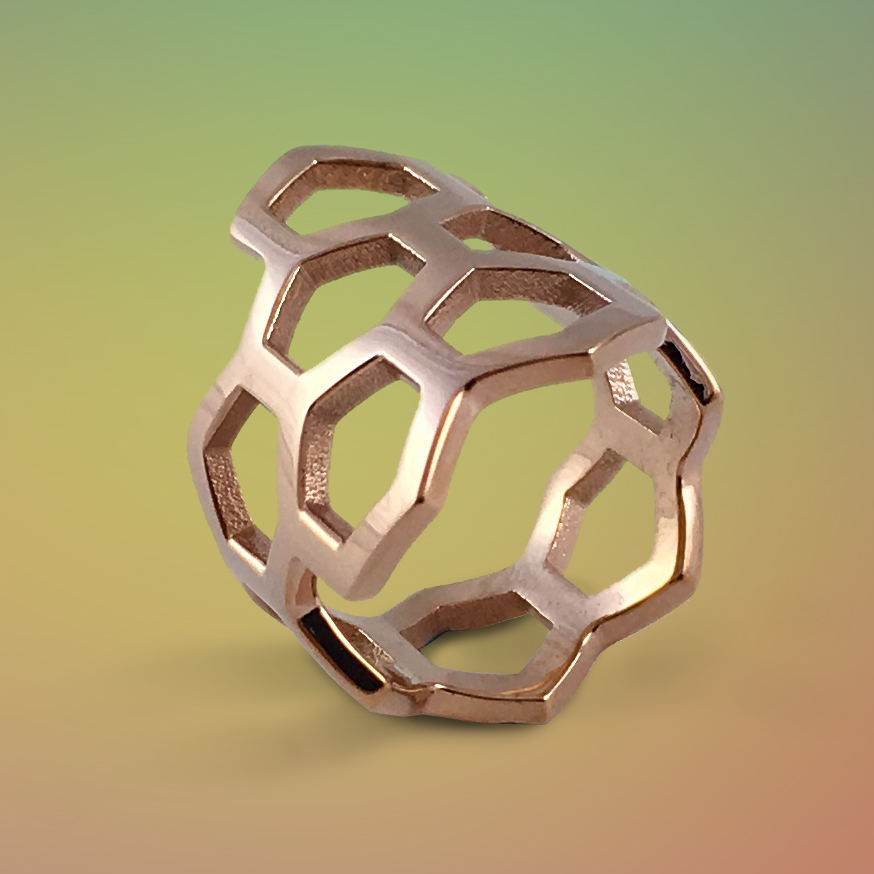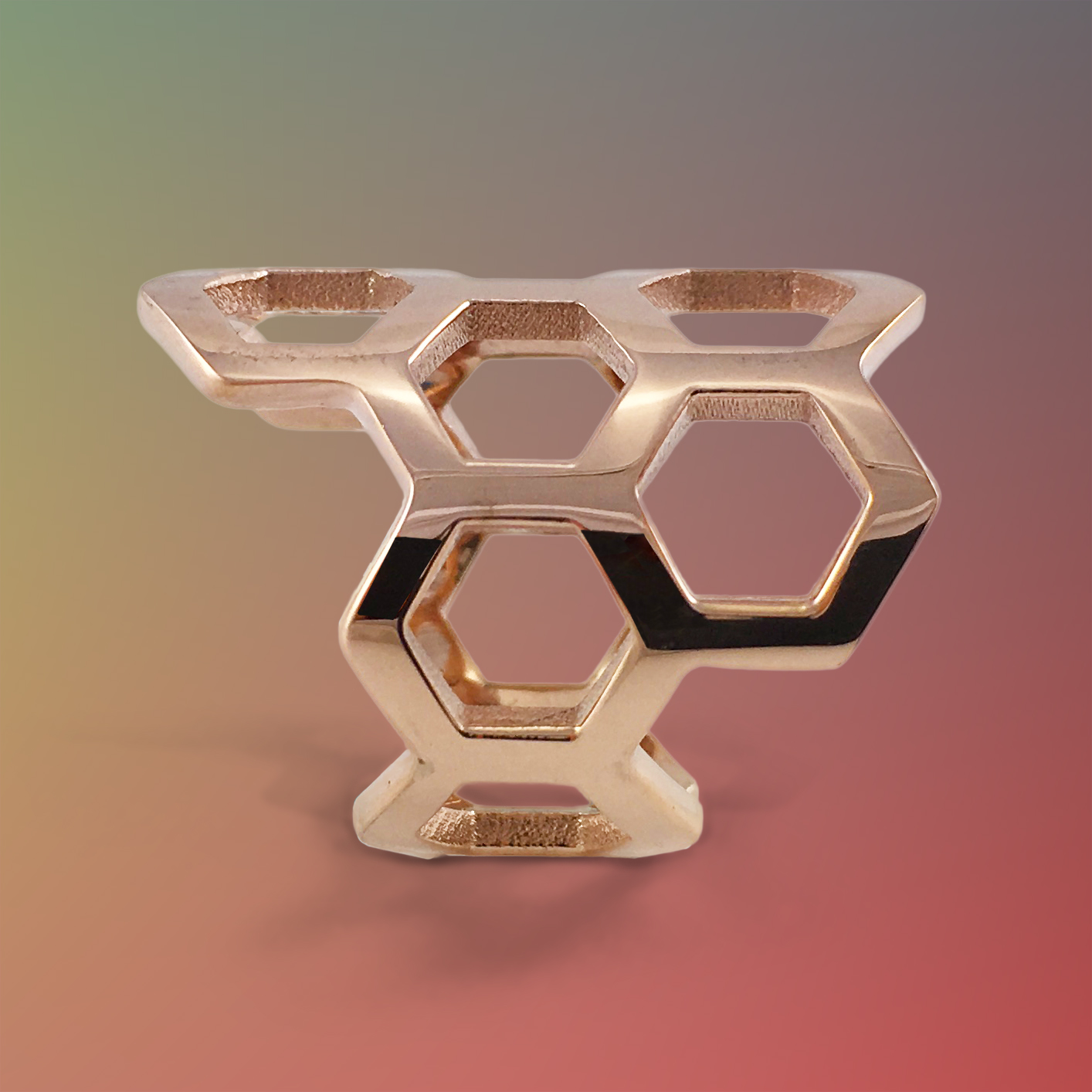HONEYcomb BEE RING
3D PRINTED, CAST IN PRECIOUS METALS
AVAILABLE FOR PURCHASE AT SHAPEWAYS
FEATURED IMAGE: 14K ROSE GOLD PLATED BRASS
AVAILABLE IN:
RING SIZES 5 - 12
+ SHIPPING
Glam For Geometers And Bling For Bee Lovers.
Honeycomb is a segmented structure composed of wax secreted by honey bees. Honeycomb is important to many aspects of honey bees lives. Bees deposit pollen, store honey and house their larvae in the honeycomb’s hexagonal cells. First, a bee collects nectar from flowers and stores it in its honey sack. The bee then returns to the hive where other worker bees remove the nectar and begin digesting the complex sugars into honey and wax. Honeycomb wax is secreted from glands of female worker bees.
Honeycomb is structurally economical, the design allows bees to store a greater amount of honey while requiring less wax. Bees must consume eight ounces of honey in order to secrete one ounce of wax for building.
There are multiple theories as to why bees generate the hexagonal shape of their wax honeycombs. Mathematician, Jan Brożek (1585-1652) suggested the hexagonal form uses the most minimal amount of material to generate a cell. Biologist and mathematician D'Arcy Wentworth Thompson (1860-1948) proposed the angular geometrical shape of the honeycomb cells are produced by bees forming their individual cell walls against one another.
More interesting bee information:
The Honeycomb Conjecture, proven by the mathematician Thomas C. Hales in 1999 demonstrates that regular hexagonal grid tiling is the most efficient way to divide a surface into regions of equal area using the minimum total perimeter.
Beekeepers use a centrifugal machine to spin the honey from the honeycomb, this process is known as “pulling honey”.







